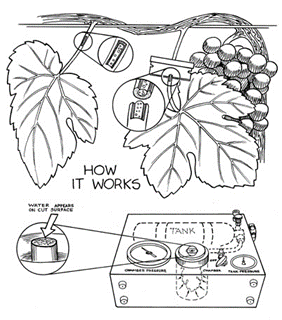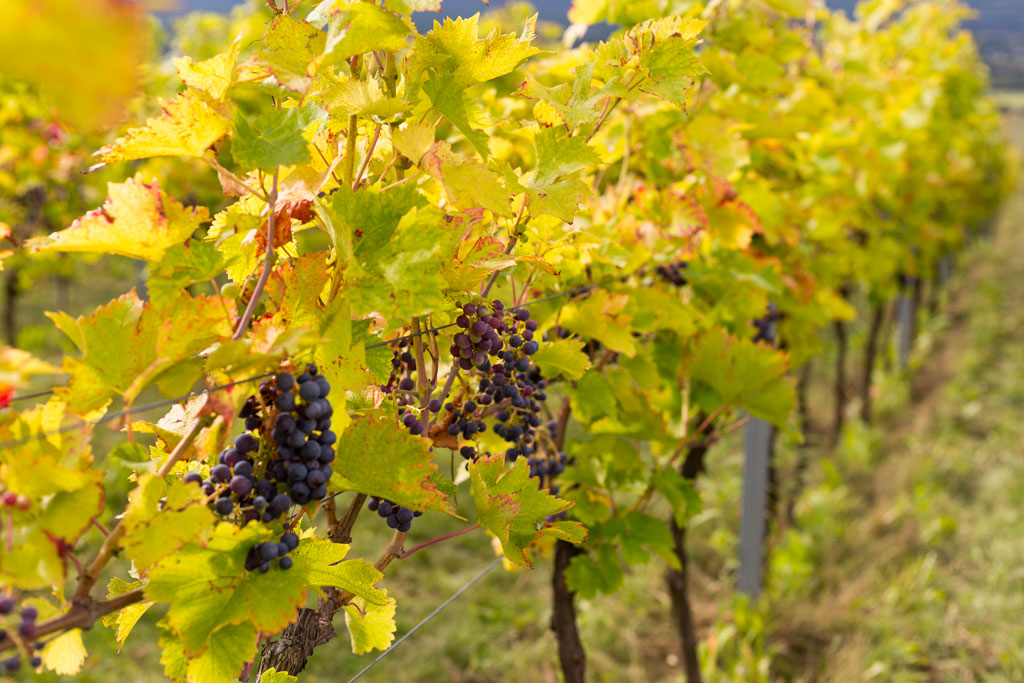Monitoring water stress in vineyards: a key factor in grape quality
Managing water stress in vineyards is crucial to ensuring vineyard health and producing high-quality grapes. Severe water stress can lead to a reduction in berry size, a drop in sugar content and a deterioration in fruit quality. Early detection enables winegrowers to adjust their irrigation strategies, avoiding irreversible damage while optimising the use of water resources.
Methods of detecting water stress
Direct visual observation
Direct visual observation of the canopy is a simple method for identifying water stress in vines. For example, the apex technique involves monitoring the growth of the shoot tips. If growth stops or the young shoots show signs of wilting, this is an indication of water stress. However, these qualitative methods often only detect stress only at advanced stages, making it more difficult to prevent damage.
Illustrations of apex methods:

Source : Observation of vine shoot growth: a simple and operational decision-making tool for monitoring the water status of vines in the vineyard (2023) Léo Pichon, Cécile Laurent, Jean-Christophe Payan, Bruno Tisseyre (OenoOne 57)
Measuring leaf water potential
Measuring leaf water potential is a more accurate quantitative approach to assessing the water status of vines. By assessing the pressure required to extract water from the leaves, winegrowers can determine whether the vines are receiving adequate hydration or are under drought stress. This technique uses a pressure chamber that applies controlled pressure to a leaf or small shoot. As the pressure increases, water is expelled from the cut section of the leaf, and the pressure at which the water appears can be used to measure the hydric potential of the leaf.

Variability of water potential
Leaf water potential varies throughout the day key measurements corresponding to precise moments:
Pre-dawn water potential (or base potential) : measured before sunrise, when when plant and soil water potential are in equilibrium , this parameter is a crucial reference for assessing water availability in the soil.
Midday water potential: measured during the hottest part of the day, this reflects the plant’s response to atmospheric demands, enabling us to assess the way in which the vine manages water stress on a daily basis.
Stem water potential: assessed by enclosing a shaded leaf in a bag to temporarily stop transpiration, this test indicates the vine’s internal water status, independently of external evaporative conditions.
Of these measurements, pre-dawn water potential is often considered the most reliable for monitoring the vine’s actual water status. It provides an assessment of the internal hydration of plants, independently of immediate atmospheric conditions, and is therefore widely used to guide irrigation management in vineyards.
Monitoring water stress, a key to sustainable, high-quality production
Monitoring water stress is essential for maintaining healthy vines and ensuring the production of quality grapes. By combining visual observation methods with precise measurements of leaf water potential, winegrowers can make informed decisions about irrigation, protecting their crops from the harmful effects of drought and optimising water use.
In addition to these observations and measurements, the Vintel® Decision Support Tool models soil water content and basic leaf potential throughout the wine-growing season, helping advisers and wine-growers to monitor the water content of their vineyards.
Contact us now and ask for a demo!



